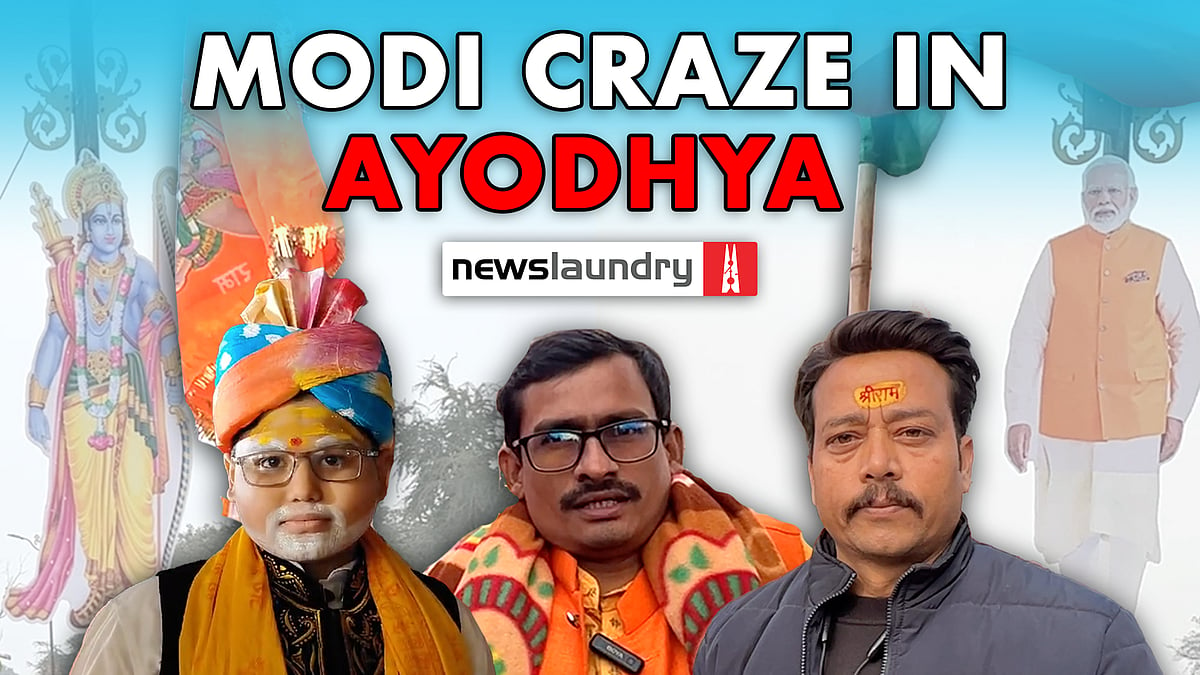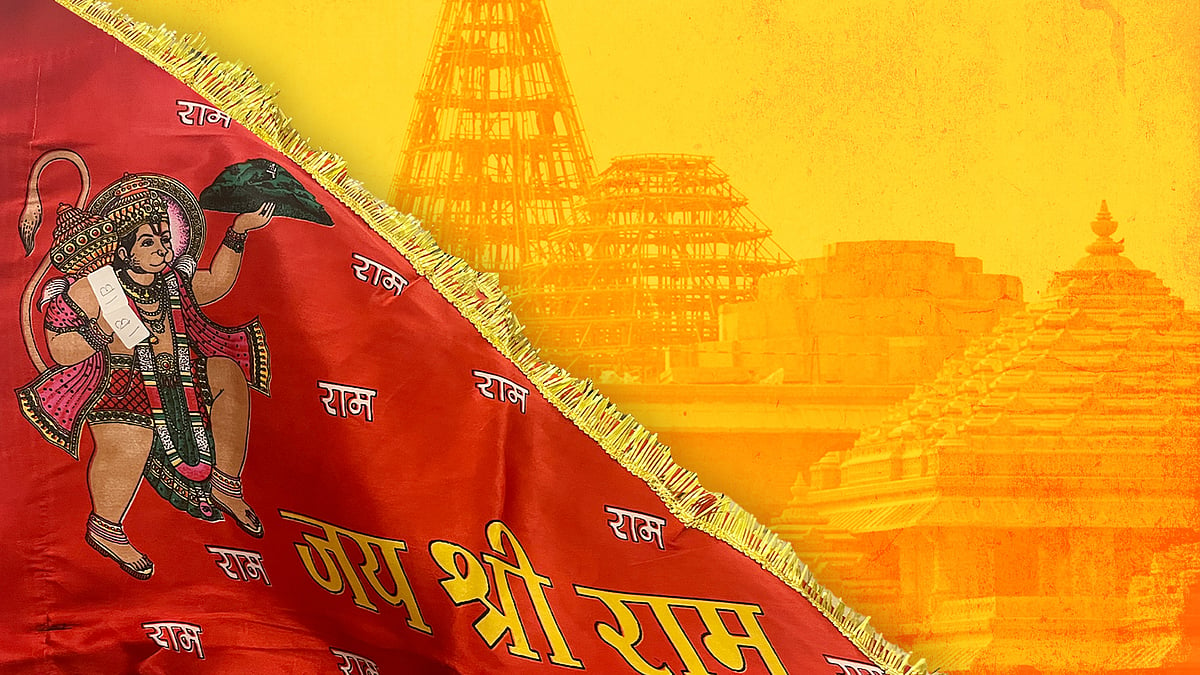In Ayodhya, a Ramkatha troupe 10 years ago foretold history
A journey with a troupe through the Ayodhya of 2014, that paved the way for India today.
At 12 years old, Akshay had the air of a contemplative adult. For three full days, he regaled me with information – all the facts, figures and folklore related to his village 12 km from Ayodhya.
Akshay is the Brahmin son of a proud and poor Brahmin father who never permitted his child to accept a midday meal served at school for fear it had been cooked by a non-Brahmin. So, though Akshay was a Class 7 student when I met him, he could have passed as a child from Class 3.
His slight stature was useful, though, as he had been recruited to play Sita in Ayodhya’s famous Ramkatha Singing Party, headed by actor, director and manager Vinayak Shastri. Shastri opined that Sita has to be frail as she needs to descend below the surface of the earth. Curiously, for Shastri, that vanishing act remained the climax of the Ramayana.
Akshay will be 22 years old now – one of the 15 million entering India’s job market, perhaps part of the 65-75 percent that is unemployable. An Amritkaal spanning a decade and a pandemic has brought in a special kind of Atmanirbharta, where only five percent of Akshay’s generation can hope to enter the labour market as “trained” labour.
Because the most tangible thing the government has delivered, to give shape to a Shrestha Bharat, is the Ram Mandir in Ayodhya. A decade ago, it was an idea. Now, it has become a reality.
I don’t know whether Akshay has vanished into the abyss dug for India’s unskilled, ill-paid, unorganised labour force in a land far away from Ramrajya. But I do know that he, as a child, helped the Hindutva cause, unknowingly turning a movement into a mandir. I doubt that Shastri today would consider the vanishing of Akshay as the climax of his Ramayana.
Ayodhya has been a symbol of the political narrative of the Hindu right since 1949. After Narendra Modi came to power, it was sure to radiate a new significance. In 2014, as India opted for a changed power matrix, I travelled to Ayodhya to get a feel for this symbol.
It was Dussehra when I visited, and I attached myself to Shastri and his troupe.
An epic can be interpreted in many ways. For ages, Ramkatha has been a mobile, flexible form of theatre, in which part-time, semi-professional actors move from place to place to perform scenes from the Ramayana. Ramkatha actors are the troubadours of Ayodhya.
For a number of days – nights, rather – I moved with them, wherever they went to enact the Ramayana. Close contact ensured a closer look at the people behind the costumes and face paint. More than anything, I heard whispers of poverty and desperation backstage. But what I didn’t expect was that, a decade later, this whisper would engulf the country, the roar fashioned out of a symbol drowning out other whispers.
I didn’t expect Akshay on-stage to trump Akshay off-stage.
With time, Ayodhya has changed, its patrons have changed, and the Ramayana itself has changed. A multi-layered epic is now a one-point propaganda tool, and even minor players like Akshay must cope with it. Shastri will now know that, whatever the limitations of his production, it became part of something much bigger – of the politics and political dialect that has changed India in the last decade.
Life and art collide
Ramkatha singers occasionally sing in dusty, dilapidated auditoriums. But their real platform is makeshift stages in overpopulated old ‘mohallas’, where they look even more paradoxical and shocking. A temporary stage – with torn curtains and dirty plastic landscapes as backdrop – looked like a luminous ship on a black sea. Epic characters slipped across. Shastri would hire three auto rickshaws and shuttle between at least three different venues every night, his mobile troupe in tow. Everyone knew then that Dussehra was the season to make a little money.
The last time I saw the troupe perform, Akshay played Sita. Vijay, a handsome college dropout, was Ram. Shastri himself was Hanuman; he would clutch his long detached tail as he hurried from one stage to another.
Suresh, undoubtedly the star of the team, played both Valmiki and Ravana. Like his co-actors, he was primarily driven by hunger. A few years before I saw him on stage, he “went mad”. He had previously sold paan-beedi from a tiny capsule-like enclosure just beside Ayodhya railway station. During that time, poked by the same hunger, his wife left him. Suresh closed the shop and took off. It took Shastri a year to bring him back to Valmiki and Ravana – and thus back to life.
These characters experience life more intimately than the characters they play. Before the curtain went up, two hijras would come out and sing the supremacy of Ram. Shastri told me he had literally snatched them away from the police; they had been detained for drug peddling at Faizabad station.
Once the duo raised the Ram-emotion of the audience to a fevered pitch, the curtain went up. Ram, Lakshman and Sita sat before a river, with a disproportionate moon and a deer drawn in blue. Ganpat Trivedi, the lead singer who would usually sit in the open just beside the stage, delivered the first hymns in his magic voice.
A burning lamp, or diya, was kept on the stage. This drew the audience like moths to a flame. They took turns to come up, pick it up, move it in a circle around the epic trio, then place some coins, maybe even notes, on a waiting tray. Obeisance rained down on the symbolic personification of Ram.
Throughout, Ganpat Trivedi sang on.
For Ramkatha singers, the climax of the play arguably comes at the beginning. A huge Ravana made of bamboo waits on the roadside for its catharsis at the end.
As I watched, the audience fell under the spell of Ram’s divinity, Sita’s frailty, Lakshman’s insignificance. Hanuman’s strides grew longer even with limited space, Ravana’s voice shook as he blamed the kingdom of the gods. The drama felt almost surreal – but the play couldn’t retain its flow.
As emotions peaked, the players were asked to stop. A Hindu leader of a certain denomination came on stage, the actors now static. A select mob came with him and, as the leader moved a flame around a tired Ram, they shouted: “Jai Shri Ram. Bolo, Jai Shri Ram! Daar pe na marenge, mandir ohi banayenge.” We won’t die in fear, we will build a temple there.
A symbol never dies if it’s kept shining. If it hadn’t been for what I saw in Ayodhya 10 years ago, I might have speculated that Modi’s coming to power was the final reason for the mandir’s 60-year-old struggle. But on those Dussehra nights, I watched desperate efforts to keep alive a symbol that was presumably dead. And now, the entire nation is blinded by its glare.
The shine of Ayodhya has taken us to our own Ramkatha stage. This sense of being part of an epic has made us blind to all else – inflation, unemployment, poverty, press freedom, social and economic inequality like never before. What next? A Hindu rashtra in the name of Ram? The RSS is 100 years old next year, so they’ll keep the symbol shining, surely.
Ramkatha singers always perform at night, under the harsh light of cheap bulbs tied to bamboo poles. As I took pictures, I knew my treatment of this drama would be drenched in harsh, violent yellow. I could have chosen black-and-white instead, but that wouldn’t have done justice to the contemporary form of Ramkatha. The harshness stands for the common men acting out an epic.
And I don’t want to know what happened to Akshay. Let him remain the way he was 10 years ago – frail and contemplative. Like discarded history.





















Contribute to the Newslaundry Sena project on the Ram Mandir project, The New Ayodhya, and power our ground reportage from Ayodhya.
 Ram’s Ayodhya has gone the Modi way. What do locals think?
Ram’s Ayodhya has gone the Modi way. What do locals think? ‘Lord Ram is everyone’s lord’: RWAs and the push for Hindu pride
‘Lord Ram is everyone’s lord’: RWAs and the push for Hindu pride